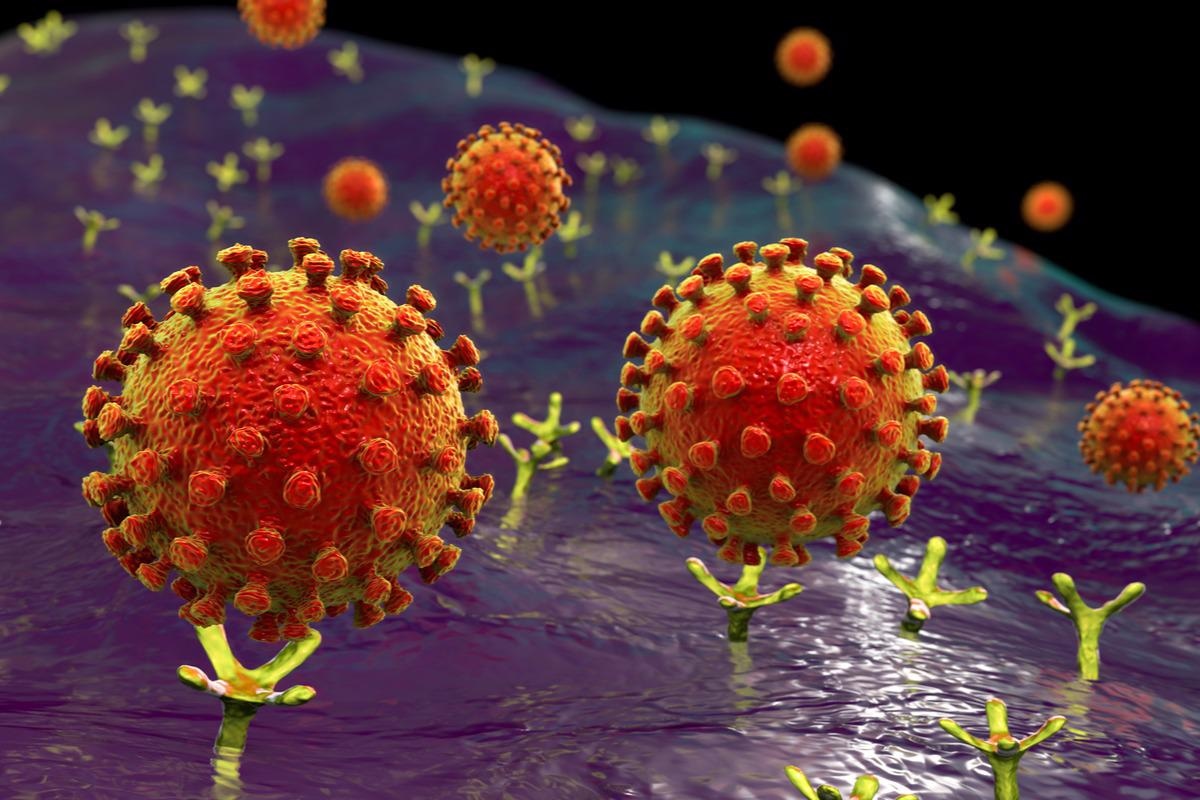The rapid outbreak of severe acute respiratory syndrome‐coronavirus 2 (SARS‐CoV‐2), a novel coronavirus, caused the ongoing coronavirus disease 2019 (COVID-19). Among all the known coronaviruses, SARS-CoV-2 has affected the healthcare system and economy the most. Although several COVID-19 vaccines have been developed against the original SARS-CoV-2 strain, their effectiveness has been reduced due to the emergence of new variants via genomic mutations. This is the reason why new COVID-19 therapeutics are urgently required.

Background
Researchers have indicated that orally bioavailable antivirals are required for COVID-19 treatment. Two new drugs, namely, molnupiravir (inhibition of protease activity) and nirmatrelvir (suppresses viral reproduction), have received emergency use authorization by the United States Food and Drug Administration (FDA). Recently, researchers have used small‐molecule inhibitors (SMIs) of protein‐protein interactions (PPIs) as an alternative target for the treatment of SARS-CoV-2 infection.
In this context, possible inhibitors of the PPIs between the CoV spike (S) protein and its cognate cell surface receptors are required. This inhibitor could prevent cell attachment via angiotensin-converting enzyme 2 (ACE2) and subsequent viral entry. Researchers stated that the identification of SMIs for PPIs is a challenging task compared to the identification of antibodies. However, progress has been made, and three SMIs of PPIs, namely venetoclax, lifitegrast, and fostemsavir, have received approval for clinical use.
A new study
A new study published on the bioRxiv* preprint server has focussed on screening and identification of possible SMIs of this PPI for COVID-19. In a previous study by the same authors, methylene blue (MeBlu), a tricyclic small‐molecule dye, was found to be effective for the treatment of acquired methemoglobinemia. They reported that MeBlu can effectively inhibit SARS‐CoV‐2–ACE2 PPI and the entry of SARS‐CoV‐2‐spike‐bearing pseudoviruses into ACE2 expressing cells.
In the new study, researchers revealed that MeBlu could effectively inhibit SARS-CoV-2 variants, such as the D614G and Delta strain. Previous studies have revealed that D614G mutation is responsible for enhanced transmissibility by increasing the affinity between S and ACE2.
Key findings
The present study indicated the ability of MeBlu to suppress the interaction between SARS‐CoV‐2 S protein and hACE2. Importantly, researchers reported that this dye can inhibit the SARS-CoV-2 Delta strain, which has been categorized as a variant of concern (VOC). This study reinforced the potential of the MeBlu dye compound as a cost-effective therapeutic antiviral treatment for SARS-CoV-2 infection.
Previous studies revealed that in the presence of light, MeBlu has a broad‐spectrum virucidal activity that has been used since 1991 to inactivate viruses in blood products before transfusions. Several studies have also shown that MeBlu is effective against SARS‐CoV‐2 and influenza virus, even at low micromolar concentrations and without UV‐activation. These studies suggested multiple mechanisms of action associated with the antiviral activity of MeBlu that include enhanced genomic RNA degradation in the presence of light. The duration of light exposure also influences the extent of genomic RNA degradation.
Several studies using Vero E6 cells have shown that MeBlu interacts at both entry and post‐entry stages of SARS‐CoV‐2 infection. Scientists have also identified MeBlu in several drug repurposing high throughput screening (HTS) assays, which were conducted to identify possible drugs with anti‐SARS‐CoV‐2 activity.
Importantly, researchers determined the concentration of MeBlu to be 5.0 mM for its clinical antiviral applicability, which falls under the range of oral administration. Previous studies have also indicated that oral bioavailability and the terminal elimination half‐life of MeBlu also fall within the ranges for once-daily oral administration.
Although MeBlu is considered to be safe, it can cause dose‐dependent toxicity. An individual subjected to more than 500 mg of MeBlu might experience nausea, vomiting, hemolysis, and other undesired side effects. Additionally, a contradicting effect of MeBlu has been observed in a person under serotonin reuptake inhibitors and in individuals with hereditary glucose‐6‐phosphate dehydrogenase deficiency.
At present, three trials are being conducted in Mexico, Switzerland, and Iran to assess the effectiveness of MeBlu for COVID‐19 treatment. Interestingly, a preliminary report showed that oral administration of MeBlu has significantly reduced hospital stay and decreased mortality of COVID-19 patients. Additionally, scientists revealed a significant efficacy with no side effect in intravenous MeBlu (1 mg/kg) treatment used as rescue therapy for moderate to severe hypoxic COVID‐19 patients with acute respiratory distress syndrome (ARDS). Interestingly, researchers observed that nebulized MeBlu treatment in patients with COVID‐19 infections showed remarkable benefits, including a decrease in inflammatory markers and oxygen requirements.
Conclusion
The authors of this study revealed that MeBlu is a low‐micromolar inhibitor of the PPI that suppresses interaction between the S protein of SARS-CoV-2 and its cognate receptor ACE2. The dye was also found to be effective against the Delta variant and to suppress virus replication in Vero E6 cells. Scientists believe that MeBlu could be used as an inexpensive drug for the treatment of SARS-CoV-2 infection.
*Important notice
bioRxiv publishes preliminary scientific reports that are not peer-reviewed and, therefore, should not be regarded as conclusive, guide clinical practice/health-related behavior, or treated as established information.
-
Chuang, S. et al. (2022) "Methylene Blue Is a Nonspecific Protein-Protein Interaction Inhibitor with Potential for Repurposing as an Antiviral for COVID-19". bioRxiv. doi: 10.1101/2022.03.22.485299. https://www.biorxiv.org/content/10.1101/2022.03.22.485299v1
Posted in: Medical Science News | Medical Research News | Disease/Infection News
Tags: ACE2, Acute Respiratory Distress Syndrome, Angiotensin, Angiotensin-Converting Enzyme 2, Antibodies, Blood, Cell, Compound, Coronavirus, Coronavirus Disease COVID-19, covid-19, Drug Repurposing, Drugs, Efficacy, Enzyme, Food, Genomic, Glucose, Healthcare, High Throughput, Hospital, Influenza, Methylene Blue, Molecule, Mortality, Mutation, Nausea, Oxygen, Protein, Receptor, Reproduction, Respiratory, RNA, SARS, SARS-CoV-2, Serotonin, Severe Acute Respiratory, Severe Acute Respiratory Syndrome, Spike Protein, Syndrome, Therapeutics, Virus, Vomiting

Written by
Dr. Priyom Bose
Priyom holds a Ph.D. in Plant Biology and Biotechnology from the University of Madras, India. She is an active researcher and an experienced science writer. Priyom has also co-authored several original research articles that have been published in reputed peer-reviewed journals. She is also an avid reader and an amateur photographer.
Source: Read Full Article
